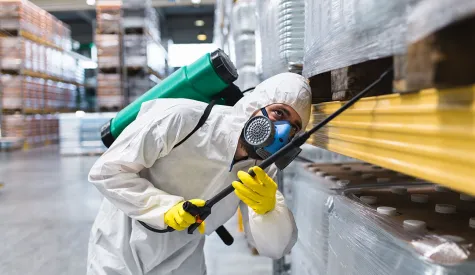Proper Hand Hygiene and Handwashing in Food Manufacturing

The Centers for Disease Control (CDC) reports that if everyone routinely washed their hands, 1 million deaths a year could be prevented. Lack of proper handwashing is the second-leading cause of foodborne-illness, and can cost your company millions in wasted product, recalls, lawsuits, and loss of sales due to a damaged reputation. Fortunately, proper handwashing is an easy and cost-effective way to prevent the spread of foodborne illness in your facility.
Proper Handwashing Steps
All employees must be trained on your facility’s handwashing procedure, and supervisors should periodically check that workers are completing all steps. To properly wash hands, workers must:
- Rinse hands in warm, clean water
- Apply soap to hands
- Scrub hands vigorously for 20 seconds, paying close attention to fingernails and areas between fingers
- Rinse hands in warm, running water
- Dry hands using an automatic hand dryer or disposable towel
- (Optional) Sanitize hands according to facility procedures
Employees should wash their hands before preparing food, before cleaning equipment or utensils, and before handling clean equipment or utensils. They should also wash their hands after handling cleaning chemicals, after changing gloves, and when switching from a raw ingredient area to a ready-to-eat food area. Lastly, employees should wash their hands after touching any unclean surface or body part, after coughing or sneezing, and after using the restroom. Your facility must have designated handwashing sinks, preferably with a motion-activated or foot-pedal tap. If your facility does not have motion-activated or foot-pedal sinks, train your employees to use a paper towel to shut off water flow after they’ve finished washing their hands.
Conclusion
Handwashing is a simple, cost-effective way to prevent the spread of foodborne illness, but all employees must be trained on and follow proper handwashing procedures every time that they wash their hands.
This blog is part of a food manufacturing safety series. For more topics, visit the blogs below:
Listeria Control in Food ManufacturingFloor and Drain Cleaning in Food ManufacturingForeign Material Control in Food ManufacturingCleaning and Sanitizing in Food ManufacturingSalmonella Control in Food ManufacturingHow Are Food Manufacturing Workers Protected From Chemical Exposure?Current Good Manufacturing Practices in Food ProductionHow do Food Manufacturers Use Hazard Analysis and Critical Control Point (HACCP) Plans to Protect Consumers?12 Ways Food Manufacturers Protect Consumers Who Suffer From Food AllergiesFood Defense

